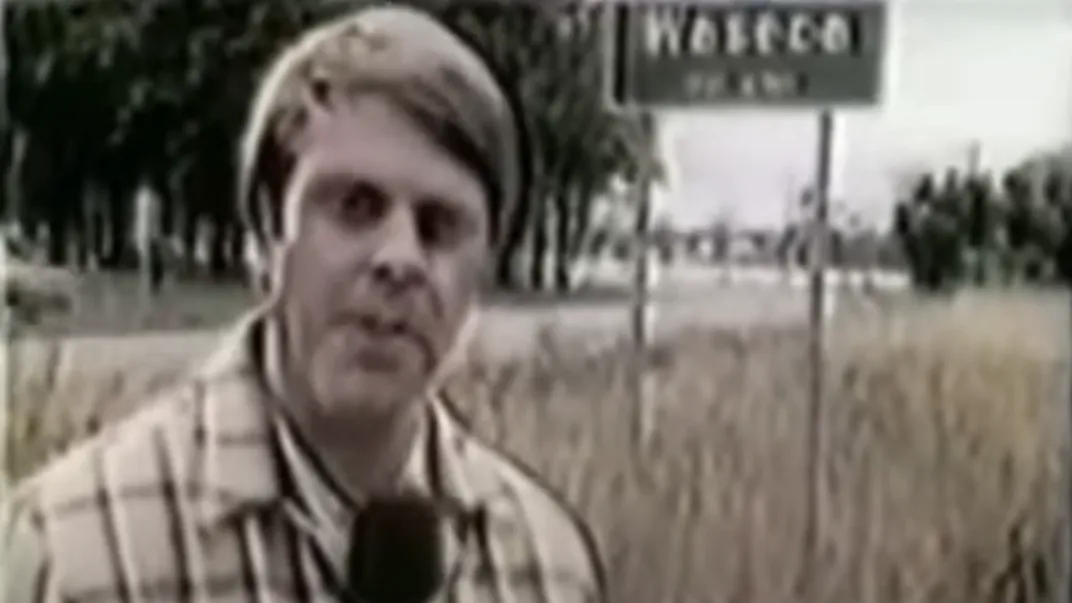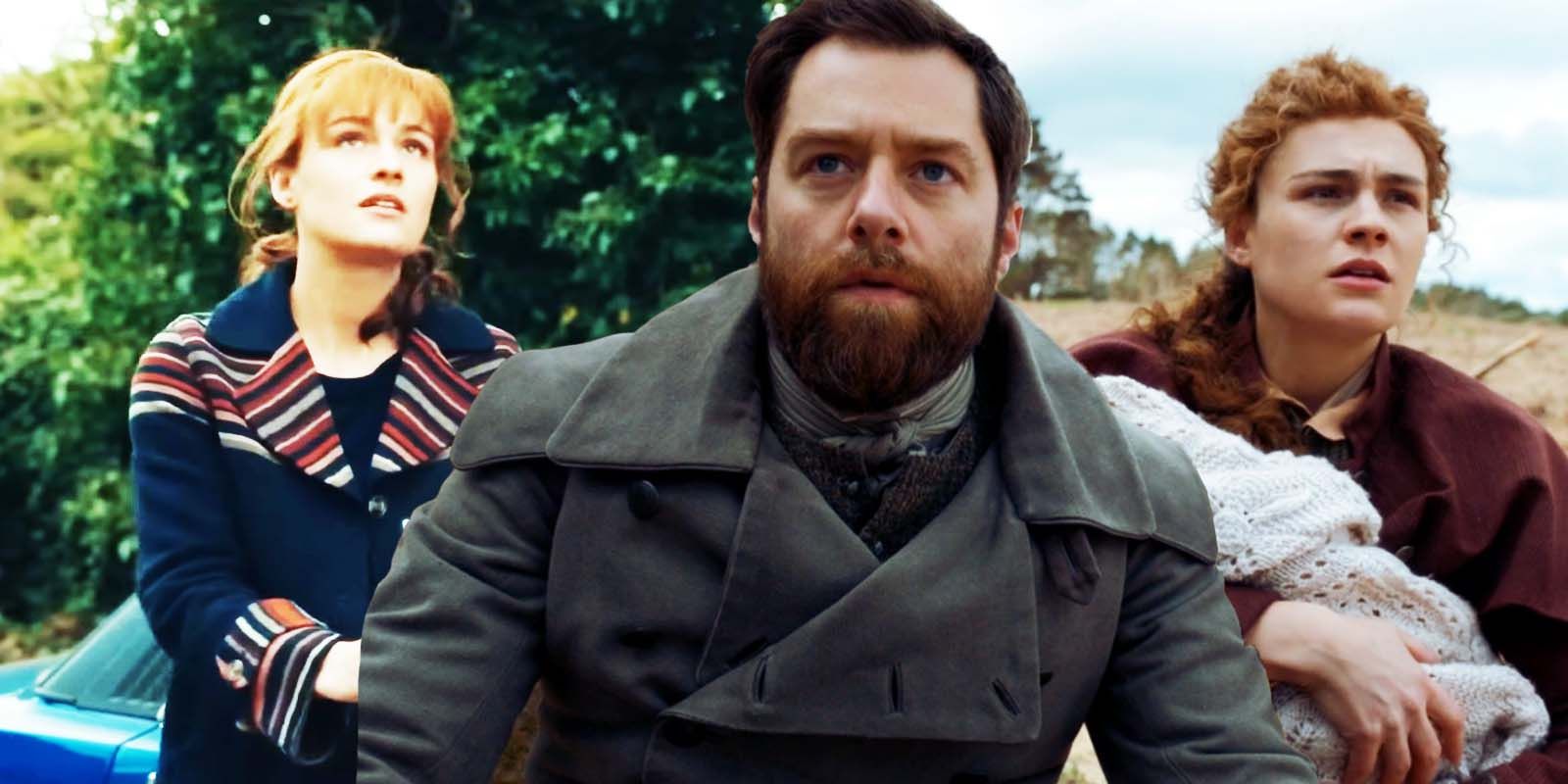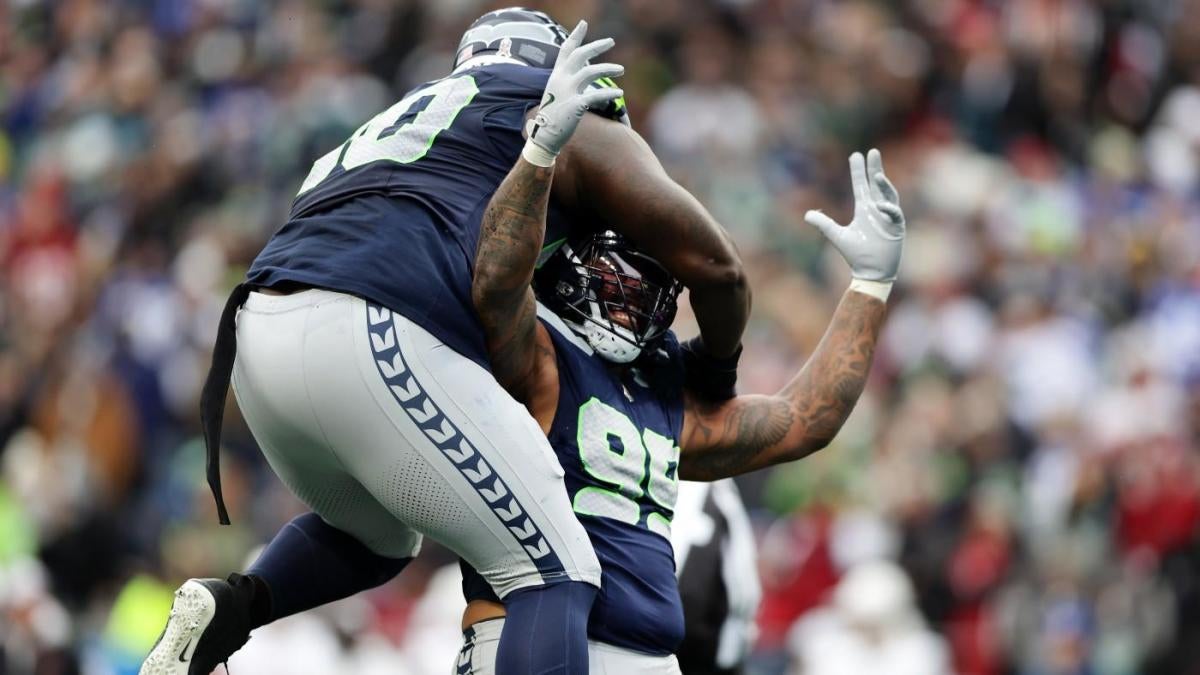World
Why a Minnesota Man Walked Around the World, Traversing 13 Countries and 14,450 Miles in Four Years
/https%3A%2F%2Ftf-cmsv2-smithsonianmag-media.s3.amazonaws.com%2Ffiler_public%2F06%2F7d%2F067d719b-c356-4542-a31e-8935358e1848%2Fkunst-in-afghanistan.jpg)
“Make no mistake, you are in some danger here; all adventurers ultimately are,” wrote an American diplomat stationed in Kabul, Afghanistan, in a 1972 letter to brothers David and John Kunst. “You can be killed by people who want your possessions or resent your presence or both.” Despite the envoy’s warning about this “fascinating, difficult and dangerous” land, he expressed “considerable envy” of the letter recipients’ ongoing journey: an on-foot circumnavigation of the globe.
Nearly 50 years ago, on October 5, 1974, one of the Kunst brothers made history, crossing into Waseca, Minnesota, more than 4 years, 13 countries and 14,450 miles after he’d first walked out of the town.
The ambitious endeavor started in the projection room of a movie theater, in the enduring tradition of colleagues wishing they were elsewhere. David (nicknamed Dave) told Rick Ebensteiner, the theater’s manager, that he dreamed of driving a Jeep across South America. Ebensteiner shared his vision of something bigger: walking around the world. “You’ve got to do something nobody has ever done before and won’t probably ever be done again,” Ebensteiner said.
The idea animated 30-year-old David and his 23-year-old brother, John, who was about to graduate from college. “Knowing that I’d be just crazy enough to go along with such a venture, Dave asked me what I thought of the idea,” John wrote. “That was it. Just hearing the idea was enough to sell us both.”
The siblings set off on June 20, 1970. They decided to walk 1,500 miles from Minnesota to New York City, then fly across the Atlantic Ocean to Portugal. From there, they would traverse Spain, France, Italy, Yugoslavia, Bulgaria, Greece, Turkey, Iran, the Soviet Union, Japan and Hawaii before navigating back to Minnesota by way of the United States’ West Coast—that is, of course, if everything went according to plan.
“Lots of people get ideas. Some people even come up with great ideas,” David later recalled. “But most people, they just say, ‘Someday, someday, someday.’ They never do it. That wasn’t going to happen to us.”
From Minnesota to New York City
Much of David and John’s quest centered around escaping the ordinary: the “modern, concrete, push-button world,” as the brothers wrote to a Minnesota newspaper. “We want to demonstrate man’s control over his own destiny and to reaffirm his strength and vitality.” The duo rejected the stifling of freedom in the “unending struggle for security.”
Still, some pragmatism was required before embarking on the journey. The Kunsts secured financial backing from banker Hal Greenwood and letters of introduction from former Vice President Hubert Humphrey and Minnesota Senator Walter Mondale. In his missive, Humphrey, also a former Minnesota senator who was then running to retake his seat, asked recipients to “extend … all possible hospitality and assistance” to the brothers, who were both “men of good character.” Having such imprimaturs opened doors to embassies and in cities and towns around the world. Buoyed by the initial outpouring of support, David and John decided to use their walk to fundraise for UNICEF, a United Nations agency that provides humanitarian aid to children. (Ultimately, the venture raised just a few thousand dollars.)
One woman suggested the brothers bring a mule, as the animal could carry their travel accoutrements and “eliminate any thoughts that we might be hitchhiking,” John wrote. Thus, the first of four mules, Willie Make It, was conscripted for their journey, to be followed by replacements at different stops along their route: Willie Make It II, Will Willie Make It and Willie Will Make It.
L to R: John, David and Pete Kunst in Pennsylvania in 1970
When David and John walked out of Waseca on a drizzly day in June 1970, to the tune of Roger Miller’s “King of the Road,” they carried the weight of great expectations. “We should be aware that this is something that has never been attempted before in the history of man,” Mayor Carl Swanson told the assembled crowd, “and we will be able to say we were there when it started.”
Some questioned how David could leave behind his wife, Jan Kunst, and their three children “while he takes off on some crazy scheme,” as one Waseca woman summarized it. But the brothers also encountered plenty of enthusiasm—and some wistful envy from those reminded of their own unrealized yearning for exploration. As John wrote, they found “this dream of adventure and escape in the minds of many people, from Waseca to New York City.”
Among the inspired was Polly Letofsky, who was 12 years old when she read about the brothers in 1974. Speaking with Smithsonian magazine, Letofsky, who later chronicled her own circumnavigation of the globe in 3MPH: The Adventures of One Woman’s Walk Around the World, said, “When I [saw] this story of a man walking around the word, and he’s from Minnesota … that opened my eyes to the possibilities.”
Meeting a princess and an explorer in Europe
During the first leg of the trip, David and John’s sleeping accommodations varied from strangers’ homes to camping in parks to a free night in an Ohio jail. In late August, a third Kunst brother, Pete, hitchhiked across the country to walk with his siblings for three days. As David recalled in his 1979 memoir, The Man Who Walked Around the World: A True Story, Pete bid an emotional farewell to his brothers, vowing to step in if something happened to either one of them.
On October 8, 1970, David and John reached New York, where they were photographed walking down 42nd Street with Willie. They flew to Portugal (courtesy of Greenwood) that December, resuming their walk in Cabo da Roca, the westernmost point of mainland Europe. Locals gifted the brothers a new mule, as they’d had to leave the first Willie behind in the U.S. Mayors along the route offered signatures as proof that the Kunsts had walked through their towns.
John (center) and David (right) with Princess Grace of Monaco (left)/https://tf-cmsv2-smithsonianmag-media.s3.amazonaws.com/filer_public/96/46/96463c8b-6717-4b06-b14e-c2341fcbd415/f7c7a320-4c5d-11ef-8eef-17b9331c4451-uo1puv7lg1x.jpg)
A Yugoslavian farmer gave the Kunst brothers a dog named Drifter (pictured)./https://tf-cmsv2-smithsonianmag-media.s3.amazonaws.com/filer_public/c0/d9/c0d9b328-ef78-4451-9445-2af9e465267a/yugoslavia.jpg)
David and John kicked off 1971 in Spain, moving on to the “very picturesque” French Riviera that spring. In St. Tropez, they happened upon the church where Mick Jagger, lead singer of the Rolling Stones, got married on May 12, 1971.
The brothers followed up their brush with rock ’n’ roll royalty with the real thing, meeting Princess Grace of Monaco, formerly the American film actress Grace Kelly, in a palace courtyard. Descending the staircase, the princess asked with amusement if the mule kicked. The brothers gave her a polished lucky mule shoe worn by the second Willie to remember the moment.
David was also enthralled to meet the famed Norwegian adventurer Thor Heyerdahl in Italy. He had read Heyerdahl’s book about crossing the Pacific Ocean in a raft in 1947. Willie, too, was welcomed by jovial patrons in the restaurant where Heyerdahl was dining. (That July, the mule became the first member of his species to enter Venice in more than a century.)
In a subsequent letter to David and John’s parents, Heyerdahl commended the pair as “young men capable of carrying out such a hard task,” despite “our modern world where the common ideal is comfort”—words that echoed the brothers’ own distaste for security.
Meeting the princess and Heyerdahl “were definitely highlights” of the walk, David, who is now 85 years old, tells Smithsonian.
From Eastern Europe to Afghanistan
The Kunsts made their way east as summer turned to fall in 1971, passing through Yugoslavia (specifically modern-day Slovenia, Croatia and Serbia) and Bulgaria (then a communist satellite state of the Soviet Union), where they encountered a public leery of engaging them. “They seemed too scared to do much of anything,” David wrote in his memoir.
Humphrey, the siblings’ steadfast supporter—and by that point back in the Senate—made diplomatic overtures to gain permission for them to “extend their route through the Soviet Union,” as he wrote in an August 1971 letter. “I feel it would be most indicative of world support for peace if such a route could be arranged.” But such gestures of goodwill proved elusive during the Cold War, and Humphrey’s efforts were in vain.
John (left) and David (right) rest in Turkey in April 1972./https://tf-cmsv2-smithsonianmag-media.s3.amazonaws.com/filer_public/07/be/07be5fd0-b82e-4329-9c26-12aec859c7f7/12ee2b10-4c5e-11ef-8eef-17b9331c4451-uo1la7ism1x.jpg)
John (left) and David (right) in San Remo, Italy/https://tf-cmsv2-smithsonianmag-media.s3.amazonaws.com/filer_public/63/63/6363041b-9f5d-4c99-9678-38cefd1a0d27/john-and-david.jpg)
In Turkey, the Kunsts were frequently surrounded by onlookers, including children who threw rocks at them. They waited out the harsh winter at an apartment in Ankara furnished by the American Embassy, then crossed into Iran in 1972, at one point declining a camel driver’s request to trade his animal for their mule.
“The American Embassy in Tehran had warned us it might be dangerous to camp in tiny villages that were off the main road,” David later recalled. “For that reason, we decided to make it to the border [with Afghanistan], where we had been told there was a military contingent.”
When the brothers arrived in Afghanistan in late August 1972, marking the approximate halfway point of their journey, they received an official welcome and a police escort. But the terrain of the Central Asian country wasn’t nearly as welcoming.
“We walked through vast, empty and hostile stretches, where the road was paved but there was no water, no pasture for Willie, no food for us, no relief from the 130-degree sun, and little or no security from nomadic bands,” wrote David and John in an October 19, 1972, letter to a radio station back home in Minnesota.
The Kunsts watched buzkashi, the no-holds-barred national sport involving a headless goat, and lauded it as “the most exciting event we have seen yet.” A few days later, the brothers left Kabul, expecting to make it to Pakistan in just over two weeks. They parted ways with their police escorts, believing the most dangerous stretches to be behind them.
“The possible dangers are a little scary … but we’ve committed ourselves, and we have to keep moving,” John wrote in his diary. “It’s this going on in the face of almost overwhelming advice against it that bothers me.”
John (next to camel) and David (right) in Iran/https://tf-cmsv2-smithsonianmag-media.s3.amazonaws.com/filer_public/51/db/51dbda53-8f52-418b-8215-72661b9cd2bf/11334058_772327716215574_7597133374074208351_o.jpg)
A fatal encounter in Afghanistan
On the night of October 21, 1972, a group of bandits approached the brothers’ wagon, likely because they mistakenly believed the Kunsts were carrying the money they’d raised for UNICEF. “Etched in the moonlight, the shadowy, turbaned figures [seemed] to glide toward us,” David recalled in his book. He attempted to scare them off with a warning shot, leading the men to fade back into the darkness.
Then David heard a shot ring out. A bullet struck him in the chest, and he called out to John to take up arms in his place. John yelled, “This is stupid, you dummies. Please.” More shots followed. David played dead as the attackers removed his watch, lying on the ground in silence until they were gone. When he checked John’s body, he failed to find a pulse. “I want to cry for John. But it’s too late,” David wrote of that wrenching moment. “More alone than I have ever been in my life,” he focused on saving himself. Caravans passed by, their owners too afraid to stop, until finally a Land Rover filled with soldiers found David and brought him to safety in Kabul.
Medical records from the city’s American clinic testify to David’s extraordinary luck: “The bullet traversed the chest,” hitting part of his left lung but missing his spine and heart. David remained hospitalized while his brother was laid to rest just outside of Waseca. Humphrey attended the funeral, and Princess Grace wrote a letter expressing her “heartfelt sympathy” at the tragic news, which she called a “heartbreaking end to your wonderful ambition.”
In truth, the end of the brothers’ ambition was still two years away. David returned to Minnesota to recover, soon finding himself “itchy to get going again”—and making plans to resume the journey with his surviving brother, Pete.
David and Pete resume the around-the-world journey
In March 1973, David and Pete traveled to the same mountain pass in Afghanistan where the previous walk had ended. There, the pair were feted by Afghan officials, with Pete now walking in John’s stead, fulfilling his earlier promise to replace one of the brothers if anything happened to them during their journey. Authorities told the brothers that several of the men responsible for the October 1972 ambush had been captured, but three others had vanished into Pakistan’s rugged Northwest Frontier Province.
From Afghanistan, David and Pete crossed the Khyber Pass into Pakistan, this time with armed escorts. Their hopes of hiking through China—a route that would “save us over 1,000 miles,” David told the Associated Press—failed to come to fruition. Henry Kissinger, then serving as the U.S.’s national security adviser, called the brothers’ story “fascinating” but was skeptical that Chinese authorities could be persuaded to allow the siblings passage. “Past efforts lead me to doubt that an intervention on our part would be effective,” Kissinger wrote to Humphrey. “Indeed, it might raise questions in Chinese minds about the independent efforts of these American boys.”
Denied permission to walk through China, the Kunsts instead traveled to India, where they faced an arduous stretch in the summer of 1973. Pete was afflicted with a severe kidney infection, leaving David to fend off robbers on his own. Bound for Calcutta, today Kolkata, they braced for monsoons and “a walk of 900 miles through very poor, highly populated country,” David wrote to an Associated Press reporter in a July 5 letter. “People, people, people, we just couldn’t get away from people,” he wrote wearily in a follow-up missive.
Pete (left) and David (right) in Amritsar, India, in 1973/https://tf-cmsv2-smithsonianmag-media.s3.amazonaws.com/filer_public/29/99/2999b480-a47d-4538-93a1-affcb675a9a0/11312900_772327162882296_1947226657779680605_o.jpg)
Unable to gain permission to cross through Burma (now Myanmar), the brothers found themselves languishing in Calcutta. Barred from taking the most direct route around the world, they decided to walk through Australia instead—a decision that would change the course of David’s personal life.
The Kunsts flew to Perth, planning to walk east to Sydney before flying across the Pacific Ocean. It was there that the peripatetic Minnesotan, who was still married to his first wife, had a chance meeting with an Australian schoolteacher at a party.
“In December of 1973, Dave Kunst literally walked into my life,” Jenni Samuel, who later became David’s second wife, tells Smithsonian. “I was totally fascinated by him and the walk.”
David and Pete ushered in 1974 with vast stretches of the Australian Outback ahead. Entries in the brothers’ daily log of where they slept underscore the isolated nature of the journey; the phrases “middle of nowhere” and “open country” appear frequently. In March, when they were about halfway through Australia, Pete flew back to the U.S. to be with his family. The next month, Will Willie Make It, the mule the Kunsts had acquired in Perth, died by the side of the road.
David was essentially stranded with his wagon. “And then I get my big idea,” he wrote in his book. “How would [Samuel] like to drive here and tow the wagon for me the rest of the way to Sydney? I’d walk next to her, and we could talk.” The two did just that.
Wrapping up the walk around the world
In July 1974, David flew from Sydney to Los Angeles to finish the trip, making his way on foot through the California desert, Nevada, Arizona, Utah, Colorado, Nebraska and Iowa. He completed the final leg of the journey solo, as his fourth and final mule, Willie Will Make It, refused to follow in the grueling footsteps of her predecessors.
A few weeks before David was due to arrive in his hometown, the largely positive press he’d enjoyed on his walk hit a snag. In Nebraska, a reporter joined the loquacious wanderer for a piece that ran on September 22. Speaking with characteristic candor, David said, “I was tired of Waseca, tired of my job, tired of a lot of little people who don’t want to think and tired of my wife. The walk was a perfect way to change all that: I just walked out of town.”
David’s raft of unfiltered musings touched a nerve. “I think Kunst is going through his adolescence a bit late,” one Minnesotan wrote in a letter to the editor, capturing the sentiments of many town stalwarts.
In a follow-up article published three days later, as the controversy peaked, David claimed his comments had been “sensationalized.” As he told a columnist who accompanied him on 14 miles of his walk, “I just hate playing games when it comes to who I am or what I am.” Why should he act “like a knight or somebody out of a fairy tale?” David asked. “That’s dishonest.”
David in Colorado in August 1974 Denver Post via Getty Images/https://tf-cmsv2-smithsonianmag-media.s3.amazonaws.com/filer_public/c9/26/c926c781-ad5f-4762-ac6f-8271ed1364cc/gettyimages-837036412.jpg)
David and Willie Make It II in France in 1971/https://tf-cmsv2-smithsonianmag-media.s3.amazonaws.com/filer_public/b0/32/b0326bdf-8f4d-4768-a6a2-03ae4d993867/david-and-willie-make-it-ii.jpg)
Some agreed with David’s notion of honesty as the pre-eminent virtue. “At least Kunst isn’t running for office, or he would have mastered the art of civilized deception,” a Minneapolis man wrote in a letter to the editor. “I’ll be in Waseca on October 5 to welcome him.”
In the final miles of his walk, David was joined by Pete, who came in from California; Ebensteiner, whose idea had sparked this epic journey; and Ebensteiner’s wife. It was a poignant moment for the thousands of well-wishers gathered in Waseca to witness his return. But some former supporters, including financial backer Greenwood and Waseca’s mayor, Swanson, decided not to attend the ceremony. David’s then-wife, Jan, who had taken a job to support their three children during what turned into the four-year demise of their marriage, was “absent or inconspicuous,” a local newspaper reported. “I always knew you’d do something crazy like this someday,” Jan had told her husband at the outset of the venture.
“Two Kunst brothers started this trip,” David told the crowd, with Pete in tears behind him. “And we said two Kunst brothers would finish it.”
The Kunst brothers’ legacy
David earned a spot in the Guinness Book of World Records as “the first person recorded to have ‘walked around the world.’” Perhaps unsurprisingly, others have made claims of this ilk, both before and after David. Konstantin Konstantinovich Rengarten, a Russian journalist, lectured in the United States during his late-19th-century walk. In 1987, Guinness editors informed David that Steven M. Newman’s 22,500-mile solo trek around the world would supplant him in their 1988 edition. Letofsky became the first woman to complete the feat in 2004. Journalist Paul Salopek has spent more than a decade retracing the steps of “our ancestors’ global migration” and is currently making his way through South Korea and Japan. But on October 5, 1974, David became the first modern traveler verified to have completed an on-foot circumnavigation of the globe.
David walked from Waseca to Waseca, but he never truly returned to his hometown. In 1977, a reporter found him in Southern California, where he was working as a caretaker for an apartment building and delivering newspapers while nurturing his dream of writing a book about the walk. (His memoir, co-written by Clinton Trowbridge, was published two years later.) “I don’t feel any different now than I did when I was 20,” David, then 37, told the journalist. “I haven’t grown up yet, and I like that.”
Pete (left) and David (right) arrive in New Delhi, India, on June 11, 1973. Keystone / Hulton Archive / Getty Images/https://tf-cmsv2-smithsonianmag-media.s3.amazonaws.com/filer_public/3c/ed/3ced30fe-a5fe-47e8-99ae-44e1b7b89a99/gettyimages-77237902_1.jpg)
By then, David had divorced Jan and married Samuel, whom he was living with in California. Over the years, the couple have visited every state and road-tripped around Europe, building a life “full of love [and] wondrous adventures,” Samuel says.
Early in the brothers’ journey, John wrote that the walk “was an opportunity to rise above the normal trivialities of life and do something unique, one of those chance-of-a-lifetime things.”
Proving their mettle and pursuing their goal was a shared aspiration that came to define both John’s and David’s lives—one cut short and one long and happy.
As David reflects today, “How fast time flies when you’re healthy and having fun.”



:quality(70):focal(958x822:968x832)/cloudfront-us-east-1.images.arcpublishing.com/shawmedia/JAEFIIKPTVFAPKJ55WWVVO7HAY.jpg)





